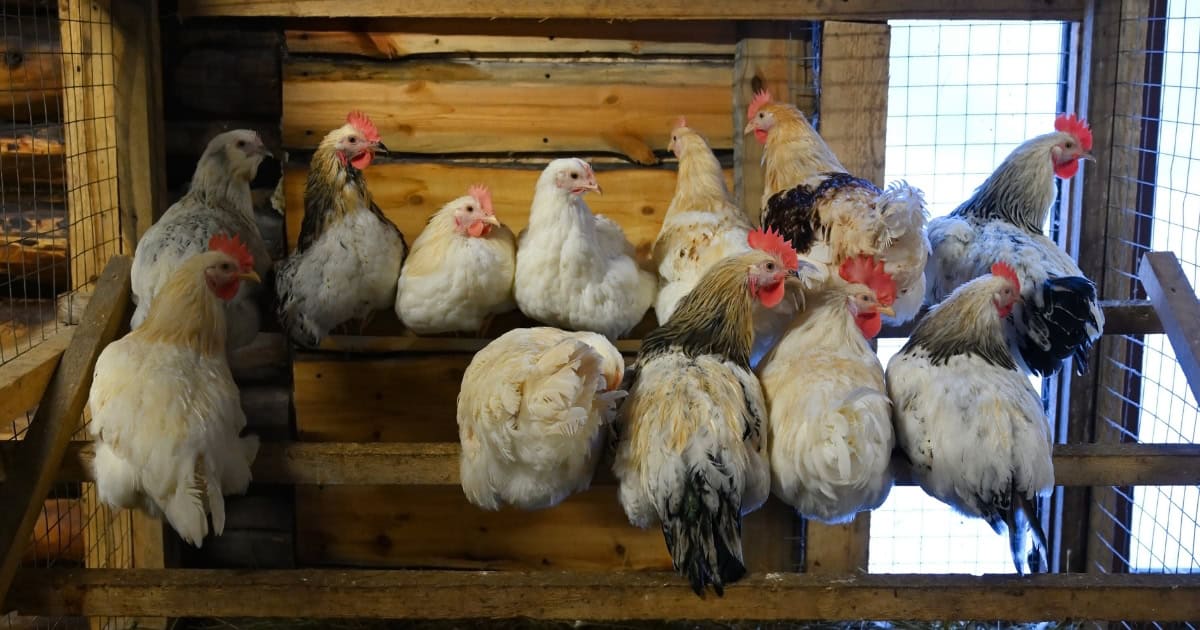Chickens
Why Use Roosting Bars in a Chicken Coop?
If you’re raising chickens, providing them with the right environment is key to their health and happiness. One essential feature of a well-designed coop is the roosting bar. But why are these simple structures so important?
In this blog, we explore everything you need to know about roosting bars and why they matter. Whether you’re new to keeping chickens or a seasoned backyard farmer, this guide will help you create a better coop for your flock.
What are Roosting Bars?
A roosting bar is a horizontal pole where chickens perch at night while in a chicken coop. As soon as it gets dark, they get into the coop and find themselves a comfortable place on the roosting bar to settle down and sleep for the night.
Why Do Chickens Need Roosting Bars?
When sleeping, chickens prefer to be high up above the ground. That way, nothing can disturb them and they will be safe against predators that could attack during the night.
These creatures also have a pecking order to observe. The chicken with the highest rank will take the highest perch, those in the lower hierarchy of the flock order must take the lower spots.
Chickens perch to be elevated and prevent health issues. Sleeping on the ground can expose chickens to moisture, cold and parasites, leading to foot problems like bumblefoot and other health problems.
For their owners, roosting bars keep the coop cleaner. As chickens perch, droppings fall below and can easily be cleaned out.
The Ideal Location for Roosting Bars
The ideal location for roosting bars within a chicken coop is in a quiet area that is elevated off the ground. Roosting bars should be positioned higher than nesting boxes to prevent chickens from sleeping in the nesting areas, which helps keep them clean.
Placing bars away from windows or doors helps protect chickens from cold drafts. Additionally, provide a ramp or steps if the roosting bars are positioned too high for easy access.
What Size Should Roosting Bars Be?
Ensuring the right length and width of roosting bars keeps chickens comfortable, healthy and well-rested, making it an essential aspect of coop design.
Roosting bars should be designed to provide enough space for all chickens to perch comfortably overnight. For standard-sized chickens, each bird requires around 20 cm (8 inches) of space on the roosting bar. Bantams, being smaller, need slightly less space, while larger breeds may require more.
In terms of width, roosting bars should be around 5 cm (2 inches) wide. A flat, wider surface supports their feet better, helping to prevent foot problems like bumblefoot. The bar’s width allows chickens to distribute their weight evenly and grip comfortably without wrapping their toes around too tightly, which is important for long-term foot health.
Cleaning the Roosting Bars
Regularly cleaning the roosting bars in your chicken coop is essential for maintaining a healthy environment for your flock. Chickens spend a lot of time on the bars, so droppings can accumulate, leading to bacteria and potential foot problems.
To clean the bars, remove any loose debris with a brush or scraper. For a deeper clean, scrub them with warm soapy water or a diluted vinegar solution to kill bacteria. Let them dry completely before putting them back in the coop.
All Coops and Cages chicken coops come with removable roosting bars, making cleaning easy and convenient. Simply take them out, wipe them down, and reinstall. This feature ensures you can maintain a hygienic sleeping area for your chickens without hassle.




